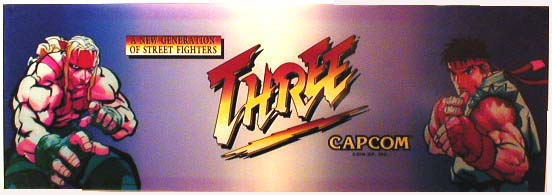I can give some insight into this, from an Operator's point of view. I was a teenager during this time frame, and worked at the family business. For most operators, the time period that existed during SF2 and Mortal Kombat was still a good one for arcade machines. Quarter drop had begun to slow, but was reinvigorated with the release of those two games. Remember at that time, arcade game platforms were still better hardware than could be found with home consoles. If you wanted to play SF2 with proper controls (joysticks and buttons) and get the full experience, it was arcade or bust.
For those who aren't familiar with arcade hardware, Capcom was using the CPS2 cart system for their games. This started with Super SF2. Operators ended up with a number of those systems, because the price of hardware carts were cheap (relatively speaking), and operators had advance knowledge of games that would be coming out for the hardware. Think along the lines of launch window games now. By the time that Alpha 1 released, things had already begun to slow down again. Most operators saw that the arcade market was dying and basically stuck to cart systems: CPS2 and SNK's NeoGeo system. By the time that Alpha 2 and SF3:NG came out... most operators sided with Alpha 2 rather than an expensive new hardware platform.
I was the guy (well, kid) in charge of picking what arcade game kits we were buying at the time, and I basically forced our company to pickup a CPS3 system with SF3:NG. I can't recall exactly how pricey it was, but we are talking thousands of dollars. Arcade kits weren't cheap; Capcom knew that we would be making money off of them, and priced accordingly. However, you have to realize that it wasn't just the operator making money off of them, there was usually a split of the profits going to the location, and also state sales tax on each play to deal with. Anyways, back to the point: the SF3 kit did terribly. The reason was probably multi-pointed. A dying arcade scene, new advances to the SF system that players weren't used to, and operators that either bought only one kit to try or took a wait and see approach (and bought none). This final point led to limited exposure, which would only make the cycle worse. Why would operators want to spend money on something that really wasn't showing a return on investment, when they could spend $800 or $900 on a new Alpha 2 or 3 CPS2 cart. Most of our arcade "scene" locations were happy to get Alpha 2 instead of SF3, so why waste the money?
By the time that the other 4 CPS3 games would release, most operators (and players) had abandoned normal arcade games completely. Golden Tee golf would arrive on the scene in '97, and go on to dominate. Unless you were an operator in the NYC area, tourist destinations, or the West Coast... there wasn't a player base for fighting games, let alone anything that didn't involve a trackball and golf.
I remember our office got a call from someone at Capcom USA right after SF3 released. My dad put me on the phone with him, and we spent a few minutes talking about the failure of the CPS3 system. I have no proof, but the guy all but said that Capcom JP was going to extend the life of the CPS2 system as long as possible. They knew that the only way to keep pumping out arcade software that operators would buy, would be to basically keep prices as low as possible. That meant CPS2 carts, since that would have been Capcom's best selling platform.
I wouldn't surprise me if some former Capcom employee came out and said that SF3:NG was incomplete and rushed simply to try to get the product out before the arcade slowdown of the mid 90's. They just weren't fast enough to get the hardware out there before most of the market collapsed on itself.

